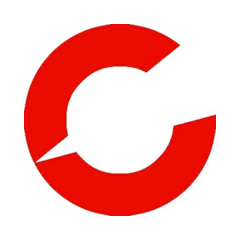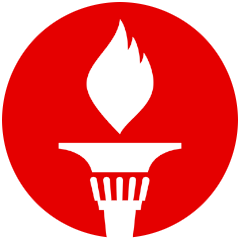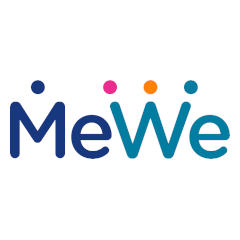
What is Bovaer®?
Bovaer® is a feed additive for cattle that uses the active ingredient 3-nitrooxypropanol (3-NOP) to reduce methane emissions during a cow’s digestive process by inhibiting a specific enzyme in the animal’s stomach.
Bovaer®'s producer, Dutch-Swiss specialty chemicals maker DSM-Firmenich, has made the claim that its product "reduces methane emissions by an average of 30% for dairy cattle and up to 45% for beef cattle.”
In 2021, Bovaer® received its first approvals for use in Brazil and Chile, followed by authorization from the European Union for dairy cattle in 2022. The product was subsequently approved for use in Canada in early 2024 and received FDA approval for the US market in May 2024.
In November 2024, Arla Foods Ltd., an international cooperative based in Viby, Denmark, and the largest producer of dairy products in Scandinavia and the UK, announced that it would collaborate with major UK supermarkets Tesco, Aldi, and Morrisons to trial Bovaer®. This announcement was met with resistance and calls for boycotts of Arla’s products.
In the US, Bovaer® is marketed by Elanco Animal Health Incorporated and at this point is designed to be added to the feed only of lactating dairy cattle. An application for beef cattle is expected in the future.
Elanco is a US pharmaceutical company that produces medicines and vaccinations for pets and livestock. Elanco was a subsidiary of Eli Lilly and Company until it was divested in 2019. The now-independent Elanco is the third-largest animal health company worldwide.
Elanco is no stranger to controversy. Its flea and tick collar, "Seresto," has been linked to more than 100,000 reports of poisoning by pesticide, including more than 2,000 pet deaths, according to a 2022 report by a subcommittee of the House Committee on Oversight and Reform. The flea collars are plastic bands impregnated with insecticides that are released over time and coat an animal’s fur. The active ingredients of the flea collar are imidacloprid and flumethrin.
There were also 894 reports of humans being harmed after exposure to the Seresto pet collar.
After a multiyear review of Seresto, the EPA announced in 2023 that it was unable to determine whether the collar was the cause of reported pet deaths. It nonetheless imposed significant mitigation measures on Elanco, including new warning labels on the collars to alert pet owners and their veterinarians to the troubling risks linked to the product. The label is in lieu of heeding calls to cancel the registration of Seresto flea collars.
On May 28, 2024, Elanco announced that the US FDA had completed its multiyear review of Bovaer® and had determined that the product meets safety and efficacy requirements for use in lactating dairy cattle.
Safe and Effective™?
Putting aside the dubious nature of the entire project of “solving” the bovine methane emissions “problem” with synthetic chemicals, we must ask: Are the listed studies trustworthy evidence that Bovaer® is as safe and effective as advertised?
Actually, the bigger question to ask is: Are the studies and advertisements of any Big Pharma, Big Ag, Big Medicine, or Big Finance company ever to be believed?
The answer to that question can only be had by asking two more questions:
One: Isn’t there enough evidence yet that government agencies regularly pump out reams of corporate-friendly literature that’s designed to legitimize products they’re supposed to oversee and regulate?
Two: Is that corporate-friendly literature by an agency based on the merits of the product being reviewed or are these "evaluations" predetermined approvals that are based on the exigencies of the corporations seeking approval and the demands of their shareholders?
Assuming that the answers to those questions are “yes, there is enough evidence” and “they are not based on merit but are predetermined approvals,” how does that affect our response to the very first question—namely, are the “listed studies” on the safety and effectiveness of Bovaer® to be believed?
Well, let’s put it this way. The industry-friendly, well-financed studies that have given Bovaer® a governmental seal of approval turn out to have lots of hidden problems.
Let’s break down that statement.
Problem #1: The studies for Bovaer® that were done on cows were short-term studies with small sample sizes.
Problem #2: Many such safety studies fall under European Union Regulation No. 1831/2003, where the manufacturer provides its own safety data.
Problem #3: The European Food Safety Authority (EFSA) may review the data, but they use company-provided summaries, with limited access to raw data.
Problem #4: Beyond the usual rushed approval processes that rely on limited and short-term data, additional concerns have been raised from these studies, including:
- A two-year rat study found an increase in rare intestinal tumors that researchers admitted “cannot be considered a chance finding”;
- A 16-cow study found that feed intake dropped significantly. Worse, “two cows had to be euthanised prematurely due to reduced feed intake and lethargy”;
- An 80-cow study found changes in blood work and, notably, smaller ovaries in treated cows.
In a 2024 report, Sonia Elijah noted multiple issues with the Bovaer® studies that were overlooked or altogether dismissed by industry. The issues included but were not limited to:
- The additive was corrosive to the eyes, a skin irritant, and potentially harmful by inhalation;
- High dosages showed a reduced intake of feed and a reduced heart weight and a decrease in ovary size in cattle.
Elijah also noted that a two-year carcinogenicity study for consumer safety that used Wistar rats showed there was evidence of carcinogenicity in female rats. "[M]esenchymal cell tumours were reported in 4 out of 49 females.”
In genotoxicity studies that tested whether 3-NOP is toxic to genes, positive results did occur in Chinese hamster V79 cells in one study.
In a second study, “results were negative except for males dosed at the top dose and sacrificed at 24 hours, in which micronuclei were statistically significantly increased compared to the negative control.”
Notably, in that second study where 3-NOP was deemed to be “non-genotoxic in vivo,” an external consultant, paid for by DSM-Firmenich, was the party that came to that conclusion.
To top it off, Sonia Elijah also drew attention to the fact that no analysis was performed on the final product to screen for dioxins and/or heavy metals.
Needless to say, this synthetic feed additive was fraught with warning signs right out of the gate, and it hasn’t taken long for significant problems to surface.
Something is Rotten in the State of Denmark
In Denmark, where it was made a legal requirement that dairy farmers add Bovaer® to their feed for 80 days or feed with extra fat year-round, many cattle farmers started using Bovaer® for their dairy cows on October 1, 2025.
By November, there were already numerous reports of cows suffering from stomach cramps, fevers, miscarriages, drastic drops in milk production, and sudden collapses. In some instances, cows had to be euthanized.
Some farmers noted that when they removed the additive from the cows’ feed, the animals recovered, and when they later reintroduced the substance, the problems returned.
Testimonials from Danish farmers were broadcast throughout social media (here, here and here), raising public awareness of the scandal as well as public ire. One result: The Norwegian government put the use of Bovaer® on pause.
In early November the Danish Veterinary and Food Administration issued a press release with new guidance for farmers, allowing them to opt out of the Bovaer® program if it is determined that “feeding Bovaer may aggravate an existing disorder or may be a contributing cause of a disorder that has arisen after starting feeding Bovaer.”
In the UK, Arla Foods has temporarily halted its Bovaer® trials on thirty farms to “review the data” before any future decision is made.
What To Do
Despite all the marketing hype, at present around 100,000 cattle worldwide are currently trialling the Bovaer® feed additive. A similar product, Agolin, is being trialled in about 150,000 US cattle.
In the US, Dairy Farmers of America is piloting the use of Bovaer® with some of its affiliates.
This pilot program to test and scale Bovaer® across member farms was made possible through a $45 million USDA grant as part of the USDA’s Climate Smart Commodities program. The program purports to be expanding “opportunities for consumers to purchase food grown or produced in a climate-friendly way.”
Exact numbers aren’t public, but the program has enrolled between ten and twenty of DFA’s farms nationwide. No comprehensive state-level data exists on the precise number of farms using Bovaer®. As public scrutiny has increased, the DFA appears to have removed details from its website.
It’s worth noting that partners joining DFA in this project include Dairy One Cooperative, Inc.; MyFarm, LLC; Dairy Nutrition Management and Consulting, LLC; Nestlé; Mars; Unilever; Barry Callebaut; Dairy Management Inc.; US Dairy Export Council; National Milk Producers Federation; Global Dairy Platform; Innovation Center for US Dairy; CoBank; and AGPROfessionals. Such conglomerates are hardly known for their environmental stewardship. Yet they are known for swallowing up small-scale farmers who do have long records of healthy agricultural practices.
The short-term solution to the Bovaer® swindle is to organize local groups and raise awareness in your community by setting up information booths at farmers markets, by going to town halls and using your “three minutes” to raise the issue, and by making calls to local and state politicians, farm groups, grocery store managers, etc., informing them that there will be boycotts on all animal products that have been fed with this additive. Highlight dairy producers that are using Bovaer® and highlight stores that use the product. Let them know they will face a people’s embargo until they desist from using the toxicant.
There are many other avenues to inform the community about this adulterated additive. It only takes a small, well-organized cadre of people to make a significant impact, especially when it comes to consumer items, where margins are small. Consumer boycotts work.
Longer-term solutions require a shift from industrial monopoly agriculture to a focus on small-scale regenerative agriculture that works with nature’s cycles and local communities.
A Final Thought
Marketed as a “climate-friendly” methane reducer that will help “save the planet,” Bovaer® might cause a critical thinker to ask if it is even a product (yes, it exists) or if it is just another ruse to create new profit streams for the Big Ag chemical cartel and the large-scale investors who profit from such schemes.
Bovaer® is indeed much more than just a product. It is symbolic of the mindset that defines industrial agriculture. It’s another subsidized “product” foisted upon us as the solution to a “problem” that doesn’t exist. All the while, and not accidentally, focusing on it means we’re ignoring the real problems that have been created by the very forces who design and profit from this feedback loop of irrational destruction.
“For the true measure of agriculture is not the sophistication of its equipment, the size of its income or even the statistics of its productivity but the good health of the land.” ― Wendell Berry, The Unsettling of America: Culture and Agriculture














